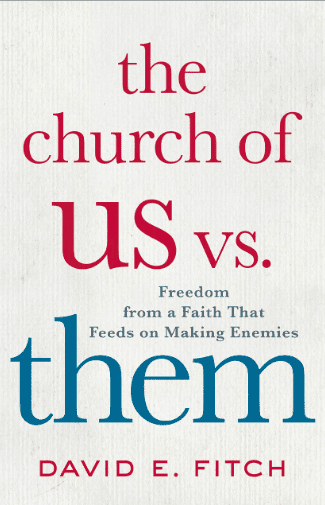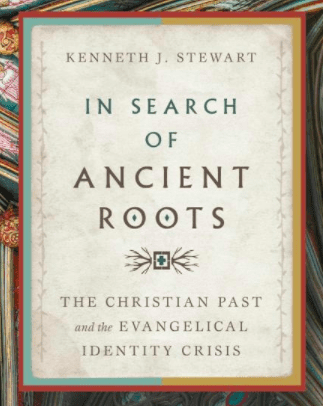I recently received, courtesy of the publisher, a copy of the new book The Anointed: Evangelical Truth in a Secular Age by Randall Stephens, an associate professor of history at Eastern Nazarene College and Karl Giberson, formerly a professor of Physics at Eastern Nazarene. Giberson has now moved on to concentrate on a number of writing projects.
 In this book Stephens and Giberson examine several different facets of American evangelicalism to explore the manner in which “America’s populist ideals, anti-intellectualism, and religious free market, along with the concept of anointing – being chosen by God to speak for him like the biblical prophets” influence a broad range of evangelical and fundamentalist beliefs and practices.
In this book Stephens and Giberson examine several different facets of American evangelicalism to explore the manner in which “America’s populist ideals, anti-intellectualism, and religious free market, along with the concept of anointing – being chosen by God to speak for him like the biblical prophets” influence a broad range of evangelical and fundamentalist beliefs and practices.
Chapter five, A Carnival of Christians, discusses the evangelical subculture and the way Christians grow up and live within this culture, separated to an extent from the broader western culture. The presentation is shaped around the experience of a young Christian – Paul – who grew up embedded in this culture in the southeastern United States. The post today will consider aspects of higher education and what is termed the “carnival of Christians“, the diversity of Christians views that deviate from any individual’s stereotyped expectation.
After describing the community structure of the local church, Stephens and Giberson go on in this chapter to explore Paul’s journey through college and into adult life. He went to a Christian college, Bryan College in Tennessee, where he experienced something of a crisis of faith; spent some time at L’Abri in England, returned to Gordon College in Massachusetts. Using Paul’s journey as a framework Stephens and Giberson describe the impact that education and engagement with the broader world has on individuals and institutions.
Education, however, liberalizes and secularizes, and in the evangelical world there is widespread discussion of Christian students abandoning their religious traditions in college and university. (p. 211)
The statistics often quoted for those abandoning faith range from 90% (the most alarmist) to 40% (a somewhat more realistic number).
This post is particularly timely as it follows Scot’s post earlier this morning, Moving Right is Never Wrong (in fact I’ve edited it a bit this morning to better make that connection). Stephens and Giberson counter the view that moving right is never wrong with the opposite. There is an implicit assumption that those who move furthest to the left are generally the most correct.
This is worth some serious discussion. There are slippery slopes in both directions.
When does moving left become wrong?
How can we engage with the issues faithfully?
The position argued by Stephens and Giberson in the rest of this chapter is that this much trumpeted loss of faith is really a matter of degree. Education does not always secularize, but it almost always liberalizes.
Evangelicals often abandon their childhood faith when they become free to explore issues on their own. The story is common and there are many celebrity “deconversions” like those of E.O. Wilson and Michael Shermer. Often the study of science is the catalyst. But a great many evangelicals … do not abandon their faith. They simply find another place within evangelicalism where they can reside more comfortably. (p. 215)
The Christian faith encompasses a broad range of positions, and even Evangelicalism is a big tent where there are many different views and positions. These ranging from very conservative to quite liberal, all the while retaining a strong belief in the reality of miracles, the incarnation, and the resurrection. Many of us hold positions more liberal than those of the churches of our youth – but still well within the fold of Christian orthodoxy. Yet the question here is where to draw the line – or even more directly whether a line should be drawn at all.
Cultural or Christian? One of the undercurrents in The Anointed is a theme that conservative evangelical positions on most issues are far more cultural than Christian. To a certain extent this is undoubtedly true – many of the most deeply held convictions are anchored in a specific time, place, and culture rather than essentials of the timeless Christian faith. The variations in churches and Christian colleges in different parts of the United States and, even more significantly, across the globe make this quite clear. We must always wrestle with the question of what is cultural, written as Keith Drury so aptly put it “in pencil”, and what is written “in blood” that is those essentials of the faith we are willing to die for, where taking a different position means leaving behind orthodox Christian faith.
But Drury also has a category in his essay My Meltdown Story for those things written “in ink” – these are the doctrines and ethical beliefs that, while not to die for, are worth holding tight. A secondary theme running through the book by Stephens and Giberson is an implication that the most liberal position on anything not written in blood is (almost always) the most correct, reasonable, and rational. This undercurrent is a place where many, myself included, will become a bit (or more than a bit) uncomfortable with the position that seems to be advocated by Stephens and Giberson. There are things that I would hold are written in ink, that they seem ready, even eager, to move to the category of pencil. The following paragraphs give a taste of this.
The spectrum of evangelical belief runs from a rigid, judgmental, sometimes harsh fundamentalism on one end to a more liberal and culturally plural expression on the other. Often an evangelical “crisis of faith” is resolved with a simple liberalizing, whereby specific beliefs – biblical literalism, young earth creationism, homosexuality as perversion, eternal torment of the damned in a literal hell, the sinfulness of abortion – are abandoned and other beliefs – the Bible as literature, concern for the environment, racial and cultural equality for oppressed groups, universality of salvation, an emphasis on social justice, tolerance of diversity – move to the center animating ethical and theological concerns. The evangelical spectrum encompasses both of these camps. (p. 216)
And later:
Despite the confident claims of the culture warriors …, evangelicals – as Paul happily discovered – need not reject contemporary science in favor of creationism, conventional history in favor of David Barton’s “Christian History,” or mainstream psychology in favor of James Dobson’s biblical alternative. And they most certainly do not have to embrace the far-fetched apocalyptic speculations of Hal Lindsey and Tim LaHaye. (p. 223)
The issues in these two lists run the gamut from theological to scientific to ethical to hermeneutical. Conflating them all together obscures the key issues involved. The approach across the board should not be the same. In fact grouping them all together obscures the true central questions in each case. The issues involved in consideration of young earth creationism, abortion, and hell are fundamentally different (and they shouldn’t be contrasted with environmental concern, racial equality, and social justice).
It is absolutely true that all of these issues must be on the table open for conversation concerning questions and doubts. One of the things we try to do on this blog is to put the issues up and think through the pros and cons looking at different sides of the questions.
But it is not true that all “conservative” positions are equally indefensible or that the opinions of secular experts should necessarily carry the day.
Which of the issues listed by Stephens and Giberson are cultural, thus open to being erased or changed?
Which, if any, are more substantive aspects of Christian faithfulness?
How can we tell the difference?
If you wish to contact me directly you may do so at rjs4mail[at]att.net.
If interested you can subscribe to a full text feed of my posts at Musings on Science and Theology.











